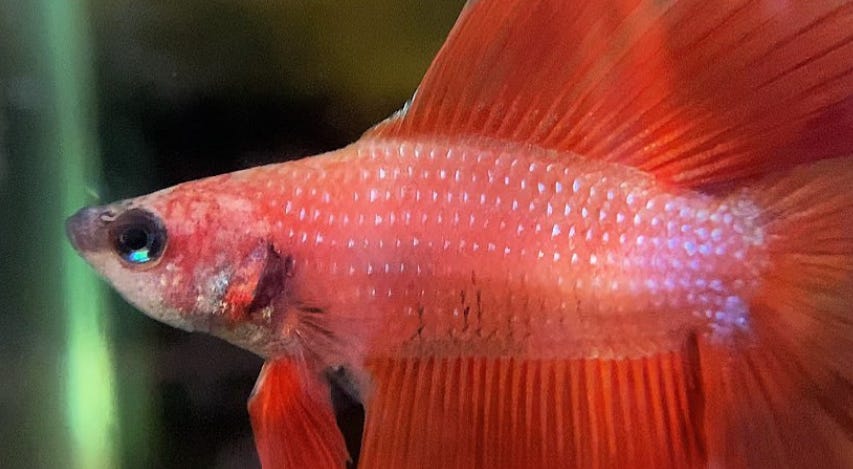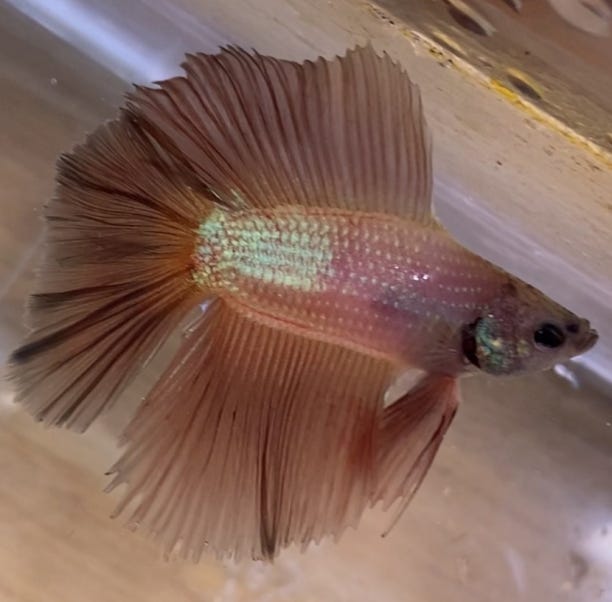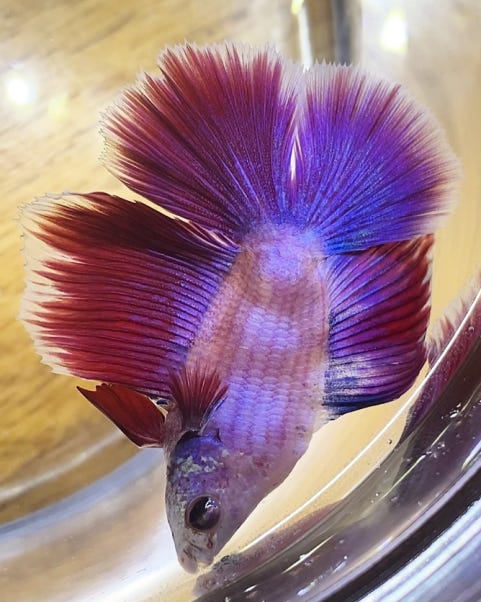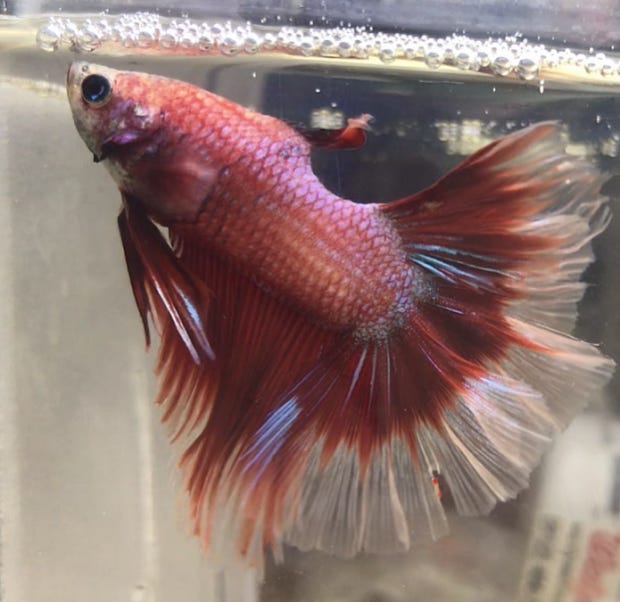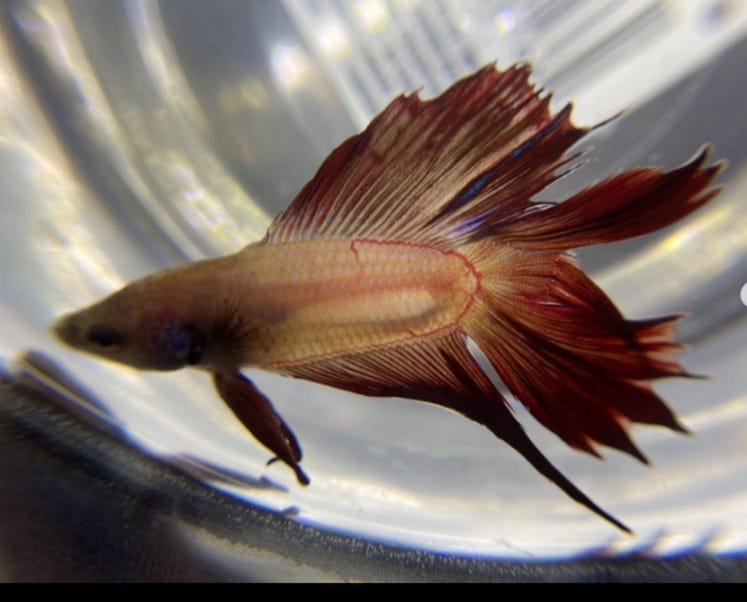Now that I’ve figured out how to work this site, it’s time to move onto each individual tail type and their issues. Remember, I’ll be focusing mainly on everything wrong that commonly repeats within certain betta lines as seen within my pool of over three thousand sick bettas. And the first on the list— The Doubletail.
Sir, a rescue Doubletail betta
Also called Twintails, the Doubletail betta is characterized by having two caudal fins that lie stacked on top of each other as opposed to side-by-side like in fancy goldfish. Instead of having a dorsal fin, Doubletails have a repeating anal fin on the top of their body, meaning their underline replaces their top fin. This look is caused by a genetic mutation that ‘doubles’ not their finnage but their entire back half, causing a repeat of everything past their gut like a mirror-image against their spine. The mutation effectively doubles the amount of fins a betta has, leading to a lot of pretty finnage to sway through the water as the betta swims along. Doubletails have a classic, full-finned look that is considered desirable within the pet trade.
But such an extreme mutation is not without its drawbacks.
When I think of Doubletails, one condition more than any other rises to the top of my mind— Floating Swim Bladder Disorder (SBD). Doubletails are plagued by this condition, and often they develop chronic cases that resist treatment. This is due to the mutation that causes the Doubletail itself. The swim bladder in a betta runs along their spine right behind their gut cavity, and it takes a perfect Doubletail body development to avoid interference with the swim bladder. In a common pet store-line betta, this is often not the case due to poor breeding and the swim bladder ends up stretched or compressed, leading to SBD. When I get Doubletail fish cases— 80% of the time it’s due to floating SBD.
Also Sir, with ‘petstore disease’.
Doubletails also suffer from gut mobility issues, bloat, and constipation. Remember, because of their mutation they don’t have a regular internal anatomy. Everything gets squished together. These gut issues commonly lead to, you guessed it, SBD. Because of this, they can get what I call ‘petstore disease’ where they turn pale and floaty due to the unheated betta cups and poor pellet foods. When fed properly and in heated water, this type of SBD often clears up immediately. Other cases, notably constipation, can be a life-long battle.
Doubletail bettas are also prone to Short-Spine Syndrome. While once relatively rare, it’s becoming more and more common to see shortspine bettas being sold in stores. Much like shortspined animals of other species, bettas with this condition exhibit an unnaturally short and compressed spine. All of them display some degree of SBD, and as time passes often the condition worsens as daily wear and tear on the spine begin to cause it to contract even more. Bettas with this condition rarely live past one and a half years old.
Toby, a short-spined betta.
Doubletail bettas also show an increased chance of being a ‘notched’ betta. Notched bettas show deleted body segments that fail to develop normally, leaving empty patches almost like a bite has been taken out of them. Even the bones are affected. While these notches are usually harmless quirks, it’s interesting to note their increased prevalence in the Doubletail type. It’s almost like their repeated body section is more vulnerable to genetic deletion as well.
Jaws, a notched doubletail betta.
Because of these things I firmly believe that Doubletail bettas are not a beginner’s betta fish, being genetic nightmares above and beyond almost every other tail type and betta line there is. They can make great pets and finned companions but it’s nearly impossible to find well-bred ones these days and almost every one I see has some sort of problem.

